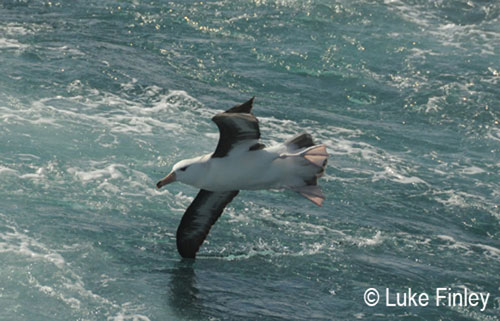Ben Lascelles (Royal Society for the Protection of Birds, UK) and colleagues have addressed the issue of how to use seabirds to help choose Marine Protected Areas, publishing in the journal Biological Conservation.
The paper's abstract follows:
"Marine Protected Areas (MPAs) are recognised as a key component of an ecosystem-based approach to managing the marine environment more effectively and sustainably. Marine top predators, such as seabirds, may be used to identify and prioritize sites for marine conservation. Here we highlight the important role that seabird scientists can play in identifying candidate sites for MPAs; areas identified using at-sea surveys, seabird tracking, and species-habitat modelling. Prioritization of species and sites needs knowledge of ecological and habitat dynamics, threats and important areas at key stages of annual and life-cycle. The results need to be interpreted within the context of relevant policy mechanisms and agreements. The size and shape of candidate MPAs should be: (a) realistic for the key species and systems involved; (b) easy to monitor and enforce; and (c) where feasible involve reasonably long-term data sets. Designation of MPAs by relevant authorities and organisations will require effective advocacy (at local, national and international levels) and must be based on robust and defensible science. Site boundaries should also be sufficient flexibility to be modified, if necessary, in the light of future experience and data collection. The effectiveness of MPAs at the scale required for seabird conservation will need to build on existing experience and develop innovative, as well as traditional, marine spatial planning, monitoring and management techniques. To achieve this within the target timeframes outlined in a number of policy mechanisms will require the rapid development of new approaches, resources and partnerships."

Black-browed Albatross at sea
Reference:
Lascelles, B.G., Langham, G.M., Ronconi, R.A. & Reid, J.B. 2012. From hotspots to site protection: identifying Marine Protected Areas for seabirds around the globe. Biological Conservation doi.org/10.1016/j.biocon.2011.12.008.
With thanks to Ben Lascelles for information.
John Cooper, ACAP Information 0fficer, 22 April 2012

 Français
Français  English
English  Español
Español